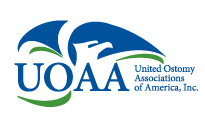Words of Advice from UOAA’s Advocacy Committee Co-Chair Sue Mueller and Advocacy Manager Jeanine Gleba
UOAA often hears from the ostomy community about their struggles with getting quantities of ostomy supplies that are over the Medicare allowable limits. UOAA recognizes that the process to obtain supplies beyond the maximum amount is difficult to navigate and is not well understood.
Medicare’s coverage of ostomy supplies is explained in their Local Coverage Determination (LCD) policy (A52487) and the allowable quantity limits are in LCD policy L33828. According to their policy:
“The quantity of ostomy supplies needed by a beneficiary is determined primarily by the type of ostomy, its location, its construction, and the condition of the skin surface surrounding the stoma. There will be variation according to individual beneficiary need and their needs may vary over time. The actual quantity needed for a particular beneficiary may be more or less than the amount listed depending on the factors that affect the frequency of barrier and pouch change.
The explanation for use of a greater quantity of supplies than the amounts listed must be clearly documented in the beneficiary’s medical record. If adequate documentation is not provided when requested, the excess quantities will be denied as not reasonable and necessary.”
According to our conversations with the Center for Medicare and Medicaid Services’ (CMS) billing contractors the quantities listed are reasonable and necessary for 80% of the patient population. The key for the small population who require quantities of supplies that exceed the usual maximum amount, is the information documented in the medical record that explains the need for the increased amount. What are the factors that affect the greater frequency of changes for you? You must determine what documentation is missing from your medical record that medically necessitates having the greater quantity and then work with your medical professional to get the missing information included in your records and have your supplier submit them to Medicare. Please note that a letter from a nurse or doctor is not sufficient nor is just having it listed on your prescription. The justification of your need for additional supplies must be in your medical record. To learn more read UOAA’s blog “Know What’s In Your Medical Record”.
Any claim that goes over the allowable quantity is automatically denied in the Medicare billing system. It must then be appealed and the supplier has to show the documentation that proves medical necessity etc. Appeal denial is so frequent that most suppliers no longer advance the increased amounts while waiting for an appeal decision and do not automatically file appeals. They only submit claims for the allowable limits and then the consumer has to pay out of pocket for any overages.
Given the cumbersome frustrating process, before you deal with the hassle, UOAA suggests that you consider being re-evaluated by an ostomy nurse. Together you can evaluate why you need more supplies and determine if you need a different pouching system or can find another work around. For example someone who uses 3-5 pouches per day may benefit from changing to a drainable pouch. If there isn’t an ostomy nurse in your local area, some facilities have telemedicine options or UOAA has a self-pay virtual ostomy clinic. There are many different types of supplies available to meet varied needs of ostomates and remedy the challenges that occur over the lifetime of an ostomy. A certified Wound Ostomy Continence (WOC) nurse is the ideal person to assess your situation and make recommendations.
Increasing the number of pouches is not the solution for every problem. For example someone with a high-output stoma producing greater than 2L of liquid stool daily will want to first consider looking at their diet by working with a dietician and reading UOAA’s Eating with an Ostomy information. In some situations the solution may be adding medications or the timing of medication and eating. This is why it is important to consult with your medical team or obtain a medical team that is responsive to your needs.
After you have consulted with your medical team and determined that you have a justifiable need that can be documented for more pouches, then pursue the Medicare appeal process with your supplier. Be prepared to purchase your additional supplies while you wait for the Medicare decision. Try to get your needed supplies at the lowest cost through discounts and free supplies. UOAA lists lower cost supply resources here.
If your appeal is denied, another resource is your local State Health Insurance Assistance Program (SHIP). They can assist you with correcting billing issues, and filing complaints and appeals. With your permission, SHIP will work with Medicare directly to help solve problems on your behalf. Find your local SHIP here.
The information we just discussed applies to people with traditional Medicare, if you have a Medicare Advantage plan you should follow the appeal procedure of your plan. You may also request a case manager who is an employee of the plan for assistance with the process. The decision-making process is different with Medicare Advantage plans.
UOAA has been advocating on this issue for many years and we will continue to beat this drum with the Centers for Medicare and Medicaid Services (CMS) and their coverage jurisdiction Medical Directors until improvements are made.


